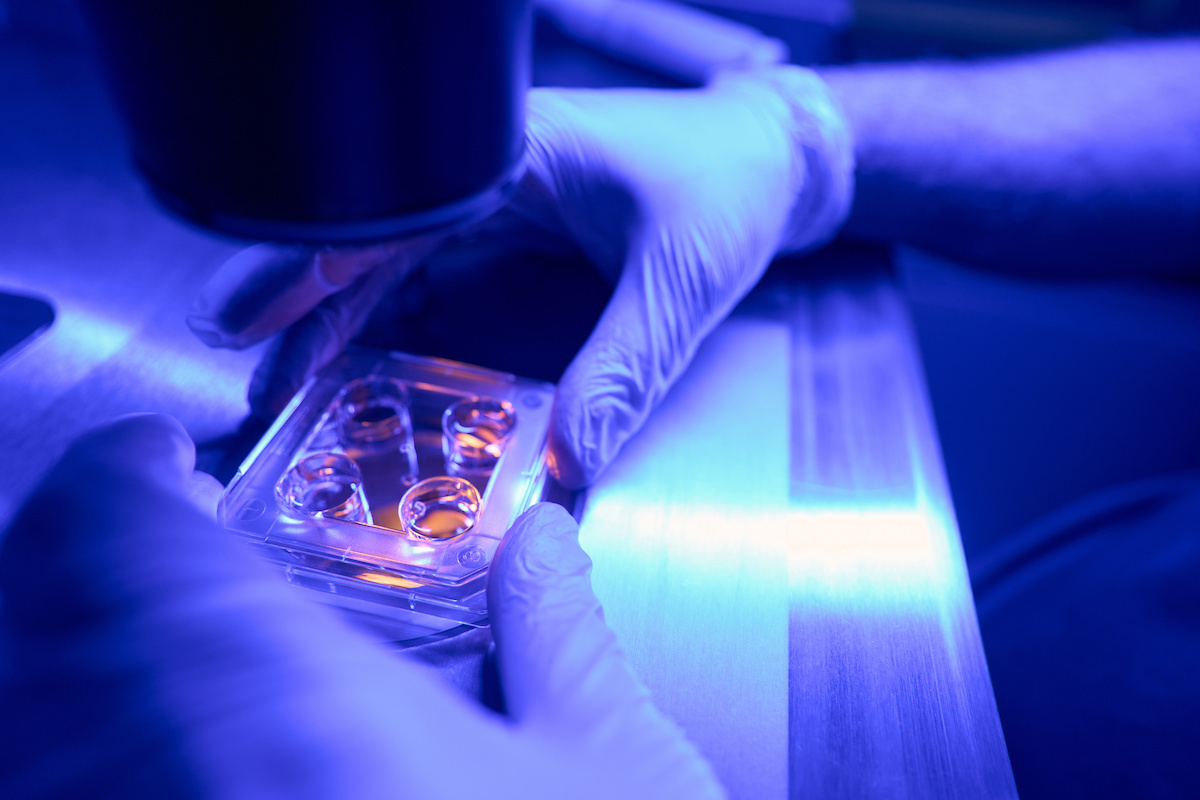Embryo transfer is a pivotal moment in a surrogate’s experience that involves implanting an embryo into the uterus of the surrogate to carry the pregnancy. The embryo is created through IVF (in vitro fertilization) using the egg and sperm of the intended parents or a donor, and the transfer process involves a precise regimen from beginning to end. With a full understanding of the embryo transfer process, you can embark on your surrogacy adventure with confidence and the tools for a successful and healthy pregnancy.
Understanding the Embryo Transfer Procedure Steps
When preparing for embryo transfer, it’s important to have a comprehensive understanding of what happens during the procedure.
- Ovarian Stimulation and Egg Retrieval: Prior to embryo transfer, the egg donor goes through ovarian stimulation to produce multiple eggs, which are then extracted through a minor surgical procedure. The surrogate uses medication to synchronize with the egg donor’s menstrual cycle.
- Fertilization and Embryo Culture: The retrieved eggs are fertilized with sperm in a laboratory, and the resulting embryos are cultured for three to five days.
- Embryo Grading: Embryos are evaluated and graded based on quality and developmental stage to determine the probability of a successful pregnancy.
- Preparing the Surrogate’s Uterus: The surrogate will receive hormonal medications on a strict regimen to create a receptive environment in the uterus.
- Embryo Transfer: Once ready, the embryos are transferred into the surrogate’s uterus through a minimally invasive procedure.
- Post-Transfer Care: The surrogate will take additional hormonal medications to facilitate pregnancy while resting for a brief period of time.
- Monitoring and Pregnancy Tests: Medical professionals use blood tests and ultrasounds to monitor the progress of the pregnancy. About two weeks after embryo transfer, the surrogate will be tested for pregnancy.
Preparing Your Body for Embryo Transfer
To maximize your chances of becoming pregnant through IVF, there are several medications you’ll need to take as a surrogate to prepare your body before embryo transfer begins, including three hormones:
- Estradiol: A form of estrogen that helps build and thicken the uterine lining, creating an optimal environment for embryo implantation.
- Progesterone: A hormone that prepares the uterine lining for embryo implantation and supports the early stages of pregnancy.
Need help navigating the medical steps leading up to embryo transfer?
Our coordinators can explain the process, timelines and what surrogates typically experience. Reach out to our team to get clear, personalized support.

Selecting the Right Embryos
The meticulous process of selecting the right embryos in surrogacy is a crucial step that involves a thorough assessment of various criteria to ensure the best chances of a successful pregnancy.
A major factor in a successful pregnancy through surrogacy is the quality of the embryos used. Embryologists use a grading system to evaluate the embryos based on certain criteria, including:
- Size
- Shape
- Symmetry
- Uniformity
- Number of cells
Additionally, embryologists use pre-implantation genetic testing (PGT) to examine the embryos’ genetic material and identify chromosomal abnormalities. By evaluating these factors, you make sure the embryos you choose give you the best chance at pregnancy.
Comparing Fresh vs. Frozen Embryo Transfers
Fresh embryo and frozen embryo transfers are two different approaches to assisted reproductive technology (ART).
Fresh embryo transfers are performed before the embryos are frozen for storage and are transferred to the surrogate’s uterus shortly after fertilization and culturing. This method requires precise coordination with the egg donor’s menstrual cycles.
Frozen embryo transfers use embryos that have already been cultured and frozen. They can be stored for an extended period of time and can be transferred in a surrogate’s subsequent menstrual cycle. This provides more timing flexibility and eliminates the need for ovarian stimulation.
Achieving Pregnancy: Success Factors and Risks
It’s crucial to understand the factors that improve your chances of pregnancy as well as the potential risks and challenges.
Success Factors
- Embryo Quality: Well-developed, genetically normal embryos have a higher chance of implantation.
- Uterine Receptivity: Adequate preparation of the uterine lining through hormonal medications ensures an environment conducive to embryo implantation.
- Timing: Synchronizing the surrogate’s cycle with the embryo development is crucial. Proper timing ensures the body’s readiness for the estimated transfer date, maximizing the chances of successful implantation.
- Surrogate Health: Factors like surrogate age, body mass index (BMI), lifestyle choices and previous pregnancy success history can play a role in the success of the pregnancy.
Risks and Challenges
- Subchorionic Hematoma: A subchorionic hematoma is a blood clot that forms between the pregnancy membranes and the uterus. It can cause bleeding and may increase the risk of pregnancy complications like miscarriage, preterm labor or placental issues.
- Ectopic Pregnancy: In rare cases, an embryo may implant outside the uterus, typically in a fallopian tube, leading to an ectopic pregnancy. This requires immediate medical attention.
- Medical Complications: Surrogates may experience complications related to hormonal medications, and careful monitoring is essential to mitigate potential risks.

Ensuring Surrogate Health and Well-Being Post-Transfer
Once you’ve successfully completed the embryo transfer, you’ll need to prioritize your physical and emotional well-being with medical care and specific guidelines.
- Rest: It’s important to physically rest for a brief period immediately after embryo transfer, avoiding strenuous exercise and minimizing stress.
- Medication: You will need to diligently adhere to the strict medication regimen that includes hormone support, such as Progesterone, to foster the development of the embryos.
- Personal Health: Staying hydrated, maintaining a nutritious diet and avoiding harmful substances (alcohol, tobacco, recreational drugs) contribute to a healthy and successful pregnancy.
- Emotional Support: The surrogacy journey can evoke complex emotions like anticipation, hope and heightened sensitivity. It’s critical to communicate regularly with the intended parents and lean on family and friends for emotional support.
- Follow-Up Appointments: You will meet regularly with healthcare providers to monitor your health and the progress of the pregnancy, addressing any concerns and keeping your health at the forefront.
Ready to Start Your Surrogacy Journey?
Embryo transfer is a key milestone in the surrogacy process, and having a clear understanding of what comes before and after helps you move through this stage with confidence. The more you know about the medications, timing and follow-up care, the better prepared you’ll feel for a healthy and successful pregnancy.
Joy of Life provides expert guidance and ongoing support throughout the entire surrogacy journey. If you’re ready to explore becoming a surrogate and want a team that helps you navigate each step, you can get started here:










